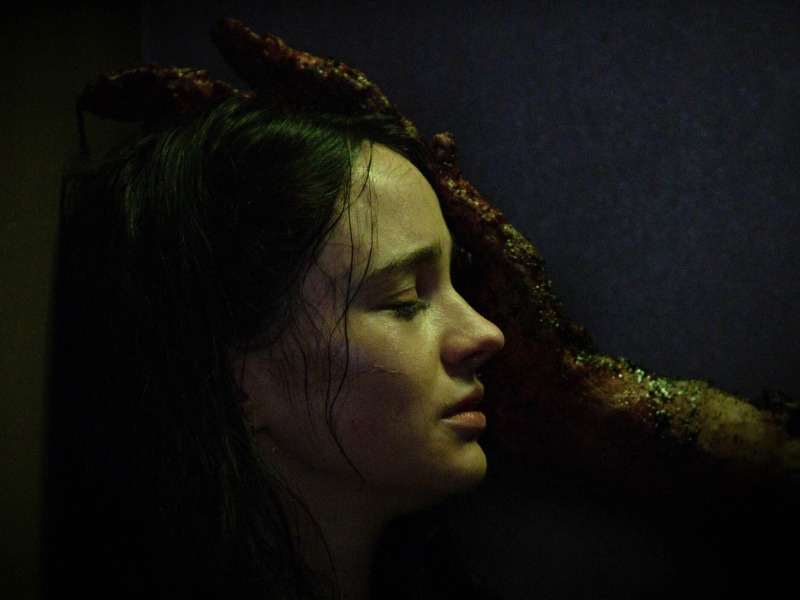Stopmotion (2023), the feature debut from animator-director Robert Morgan, is a horror film that fuses the painstaking art of stop-motion animation with psychological unraveling in a way that is as visually unsettling as it is emotionally jagged. This isn’t your typical tale of haunted artists—while borrowing tropes familiar from films like Black Swan and Possum, Stopmotion finds its own singular path by dragging both its protagonist and the audience into a tactile hell of clay, flesh, and hallucination.
Plot & Themes
The story follows Ella Blake (Aisling Franciosi), the beleaguered daughter of a legendary stop-motion animator, Suzanne (Stella Gonet), whose arthritis has reduced her to a sadistic drill sergeant directing Ella as her hands. After tragedy severs their partnership, Ella retreats into her own artistic ambitions in a dingy rented apartment, determined to finally craft something uniquely her own. Instead, isolation, fractured relationships, and a series of sinister encounters (especially with a strange neighborhood girl) launch her into a spiraling descent—where the line between creation and self-destruction grows horrifyingly thin.
What Works
- Franciosi’s Lead Performance: Aisling Franciosi is mesmerizing and heartbreaking as Ella, nailing both the quiet desperation of an undervalued artist and the terror of someone losing their grip on reality. Much of the film’s emotional weight and fleeting empathy comes from her nuanced, genuinely committed performance. Her slow psychological breakdown is more disturbing than any of the film’s gore.
- Creature FX & Visuals: The film leans hard into body horror; the tactile, crunchy sound design and grimy stop-motion sequences combine for an atmosphere that is both hypnotic and sickening. The surreal merging of Ella’s real life and her claymation creations makes for some of the most memorable visuals in recent psychological horror. Effects by Dan Martin and the editing/cinematography create a claustrophobic, dreamlike mood that fits the subject.
- Aesthetic Commitment: Morgan’s clear reverence for the stop-motion medium is part of what sets this apart. Many shots are disturbing in ways that stick in your mind—whether it’s grotesque dolls, maggots, or blurred boundaries between art and flesh.
Where It Falters
- Familiar Narrative: For all its surface originality, Stopmotion’s overall arc—artist haunted by abusive parent, descending into madness—feels well-trodden. The plot rarely surprises, and even some of its supporting characters (like Ella’s boyfriend and his sister) are underdeveloped and serve more as plot devices.
- Emotional Disconnect: Despite Franciosi’s valiant efforts, the screenplay doesn’t provide quite enough depth for us to be fully invested in Ella’s fate. The relationship with her mother is intriguing but is dispatched quickly, leaving the rest of the film a string of increasingly gruesome set-pieces and surreal detours that don’t always connect on a gut level.
- Underused Animation: Several critics note that the film’s actual stop-motion elements—while beautifully creepy—aren’t fully integrated into the horror, missing opportunities for more creative or nightmarish sequences.
Final Thoughts
Stopmotion is a bracing, tactile little nightmare of a film—equal parts haunting and frustrating. Its best moments come from the collision of medium and message: the brutal, time-consuming process of stop-motion as a metaphor for artistic agony, parental trauma, and obsessive madness. While the script can feel thin and familiar, Morgan’s direction and Franciosi’s performance make it a worthwhile watch for horror fans who crave something offbeat, gross, and visually unique.
Rating: 2/5
